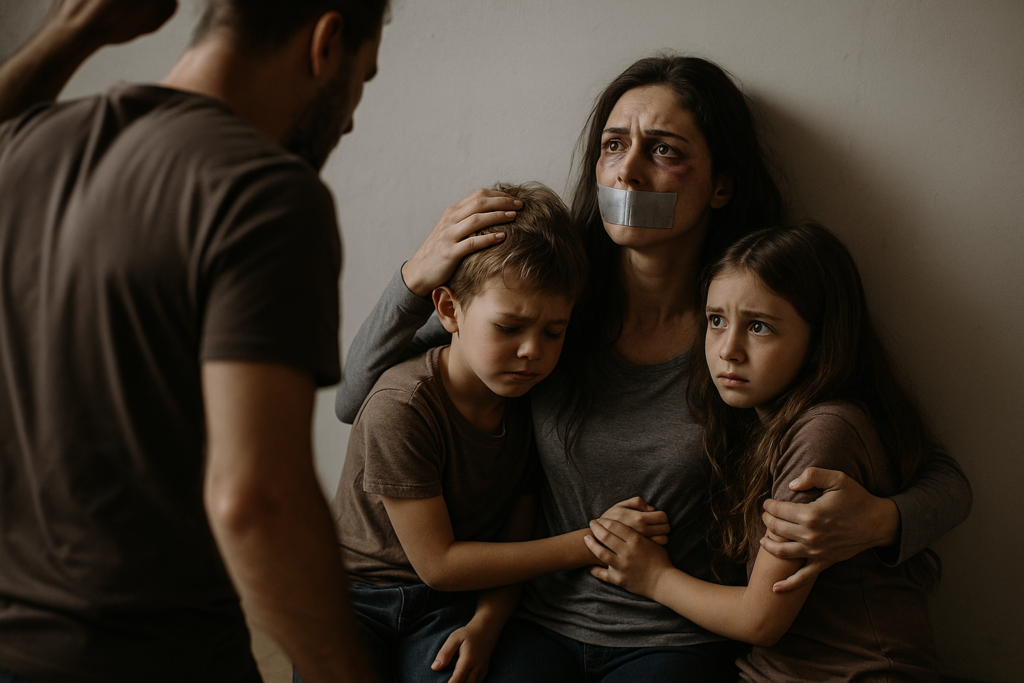|
Getting your Trinity Audio player ready...
|
Today, I write with urgency about a crisis that has reached pandemic proportions: domestic violence in Australia is claiming more lives, destroying more families, and costing more resources than COVID-19 ever did. Yet our national response remains woefully inadequate to the scale of this emergency.
The statistics are staggering. Seventy-eight women were killed by gender-based violence in 2024—the worst year on record, representing a 22% increase from 2023. One woman dies every nine days at the hands of a current or former partner. If a communicable disease was killing at this rate, we’d have lockdowns, emergency funding, and round-the-clock media coverage. Instead, domestic violence continues its deadly march through Australian homes with insufficient attention from governments and communities alike.
Behind the numbers lie preventable tragedies
Hannah Clarke’s story haunts me still. In February 2020, this 31-year-old mother and her three young children—Aaliyah, 6; Laianah, 4; and Trey, 3—were murdered when her estranged husband doused their car in petrol and set it alight. Despite protection orders and documented coercive control, the system failed them catastrophically. The coronial inquest revealed “significant system failures” that allowed this preventable tragedy to unfold.
Hannah’s case illustrates the insidious nature of domestic violence that experts increasingly recognize as coercive control—the systematic use of power to dominate and terrorize victims. Her killer had controlled every aspect of her life, hacked her phone, secretly recorded conversations, and used their children as weapons of control. The warning signs were documented. The systems were aware. Yet they proved inadequate to prevent four deaths.
This pattern repeats daily across Australia. Anonymous survivors tell me of similar experiences: “Every single one of his actions was designed to restrict my life, and strip me of my confidence and self-esteem. For a long time, I thought the problem in the relationship was me.” The psychological manipulation leaves victims questioning their own reality while perpetrators systematically isolate them from support networks.
The crisis is accelerating, not improving
Despite decades of awareness campaigns and policy reforms, the data reveals an escalating crisis. Sexual assault reports have increased annually since 2011, reaching 36,318 recorded victims in 2023—an 11% increase from the previous year. More than 120,000 recorded assaults were domestic violence-related in 2023, representing a 10% increase from 2022.
NSW exemplifies this disturbing trend. The state recorded the highest number of domestic violence murders in Australia in 2024, with 25 women killed. Regional NSW is particularly vulnerable, with domestic violence assault rates in some areas reaching eight times the state average. Walgett recorded 3,625.8 incidents per 100,000 people, while Broken Hill saw 2,032 per 100,000.
The geographic disparities reveal how domestic violence thrives in isolated communities where services are scarce and everyone knows your business. A survivor from regional NSW said: “Everyone knows who gets on and off that bus”—referring to the single daily bus service that represents her only transport option. This isolation becomes another tool of control for perpetrators.
Indigenous women bear the heaviest burden
Being a victim myself has taught me that domestic violence affects all demographics, but Indigenous women face unconscionable risks. They are 32 times more likely to be hospitalized for family violence than non-Indigenous women. In remote areas, this multiplier jumps to 51 times more likely.
The homicide statistics are even more devastating: Indigenous women face a homicide rate of 3.07 per 100,000 compared to 0.45 per 100,000 for non-Indigenous women. Between 1989-2022, 69% of homicides involving Indigenous women were intimate partner killings. These aren’t just statistics—they represent women like the 12 Aboriginal and Torres Strait Islander women killed by men’s violence since June 2024 alone.
Expert research reveals that most Indigenous women had domestic violence-related police contact before their deaths, yet these interactions were “frequently harmful,” with police both failing to respond and actively criminalizing victims. The intersection of domestic violence with systemic racism creates deadly barriers to safety that our systems have yet to adequately address.
Children suffer in devastating silence
The 418,000 children who witnessed domestic violence in their homes represent our failure to protect the most vulnerable. Research shows these children are 2-3 times more likely to have impaired language skills, sleep problems, elevated blood pressure, and asthma. The trauma literally rewrites their developing brains, creating lifelong consequences that cost the health system an estimated $11,000+ per child in increased lifetime healthcare costs.
“Children frequently remain invisible at different points of the family violence system,” experts warn. Yet almost every fortnight, a child dies at the hands of a parent in Australia. The intergenerational transmission of violence continues when we fail to intervene effectively, with 2.5 million Australian adults reporting childhood abuse experiences that shaped their adult relationships.
Services stretched beyond breaking point

Domestic Violence NSW CEO Delia Donovan captures the crisis facing support services: “Specialist DFV services are already stretched past breaking point, operating under outdated funding models that haven’t kept pace with inflation, population growth or demand… It’s like sending a paramedic to a major emergency with just one ambulance.”
The capacity crisis is stark: 39% of all specialist homelessness clients (108,000 people) experienced domestic violence. Services report wait lists stretching from weeks to months, with some forced to close their books entirely. Crisis response dominates service delivery, leaving little capacity for prevention and long-term support work.
Geographic gaps exacerbate the crisis. People living in remote and very remote communities are 24 times more likely to be hospitalized for family violence than people living in major cities. Bourke, with a population of 2,500, recorded 99 domestic violence assaults in 2019-20 but sits 375 kilometers from the nearest support hub in Dubbo. Distance becomes another barrier to safety, particularly when perpetrators monitor and control transportation.
Government response falls short of pandemic-level urgency
While governments have increased funding, the response remains inadequate to the scale of crisis. The federal government’s $4.7 billion National Cabinet partnership from July 2025 represents unprecedented investment, yet sector experts estimate annual need at approximately $1 billion just to meet current demand.
NSW’s $230 million emergency package addresses critical gaps but leaves baseline funding for frontline services largely unchanged. As DVNSW argues, “The recently announced Justice Package included little to no new funding for the frontline DFV services that victim-survivors rely on every day.” They call for a minimum 50% increase in baseline funding—a fraction of what governments spent responding to COVID-19.
The legal response has seen important reforms, with NSW criminalizing coercive control in July 2024 and Queensland following suit in May 2025. However, early analysis suggests NSW’s law may be “overly complex and narrowly constructed,” potentially limiting prosecutions. The gap between legislative intent and practical implementation continues to leave victims vulnerable.
Economic costs rival major disasters
Domestic violence costs Australia an estimated $21.7 billion annually—equivalent to a major natural disaster every year. NSW alone bears a $5.1 billion economic burden. These costs include direct healthcare, justice system responses, lost productivity, and the immeasurable human suffering that ripples through families and communities.
The lifetime cost per victim reaches $224,470 based on older calculations that would be significantly higher today. When governments claim they cannot afford comprehensive domestic violence responses, they ignore the reality that inaction costs far more. Every dollar invested in domestic abuse intervention programs shows a $1,820 net benefit.
Solutions exist but require political will
International comparisons reveal that comprehensive responses work. Nordic countries have implemented systematic screening during pregnancy and the first 1,000 days, integrated health and justice responses, and sustained investment in primary prevention. Their “Nordic Paradox” of higher reported rates may actually reflect better disclosure systems rather than higher actual prevalence.
Successful intervention requires coordinated responses across police, courts, health services, housing, and community support. Specialist domestic violence courts, perpetrator intervention programs, and trauma-informed responses have proven effective where properly resourced. Technology solutions like safety apps and improved protection order enforcement show promise but need scaling up.
READ ALSO: Sexual Harassment in Australia Workplaces 2025
The stakes could not be higher
If current trends continue, we face escalating human and economic costs that threaten our social fabric. The 255% increase in domestic violence order breaches in Queensland from 2013-14 to 2022-23 demonstrates how inadequate responses embolden perpetrators. System collapse looms as demand overwhelms capacity while specialized services struggle with high staff turnover and burnout.
The intergenerational impact means today’s failures become tomorrow’s tragedies. Children exposed to violence without intervention perpetuate cycles that create new victims and perpetrators. Rural and remote communities face increasing isolation as services concentrate in urban centers, leaving vulnerable women with nowhere to turn.
Time for pandemic-level response
After 30 years seeing this beat over and over again, I’ve never seen domestic violence rates this high or services this overwhelmed. We need a pandemic-level response to Australia’s pandemic of domestic violence. This means emergency funding to meet immediate demand while building long-term prevention capacity.
Governments must recognize that domestic violence is not a women’s issue or a family issue—it’s a national emergency undermining our safety, productivity, and social cohesion. The National Plan to End Violence Against Women and Children 2022-2032 sets ambitious targets, but current funding and implementation fall far short of what’s needed to achieve them.
The human cost of inaction grows daily. “Ending violence costs money, but not investing is costing lives,” as DVNSW’s CEO warns. Each life lost represents a failure of our systems to protect and support those at risk.
Where help is available
For those experiencing domestic violence, support is available 24/7:
- Emergency: 000
- 1800RESPECT: 1800 737 732
- NSW Domestic Violence Line: 1800 65 64 63
- Men’s Referral Service: 1300 766 491
If you’re in immediate danger, call 000. If you’re supporting someone experiencing domestic violence, listen without judgment and help them access professional support. Don’t underestimate the power of simply believing their experience and offering practical assistance.
We can continue treating domestic violence as an unfortunate social problem requiring modest interventions, or we can recognize it as the national emergency it has become and respond with the urgency and resources this pandemic demands. The choice is ours, but time is running out for the women and children whose lives depend on our collective action.
Hannah Clarke’s parents established the Small Steps 4 Hannah Foundation to “put a HALT to the incidences and severity of domestic and family violence in Australia.” Their daughter’s legacy demands nothing less than transformation of the systems that failed to protect her and her children. We owe it to Hannah, to the 78 women killed in 2024, and to the countless survivors still fighting for safety to finally treat this crisis with the seriousness it deserves.







